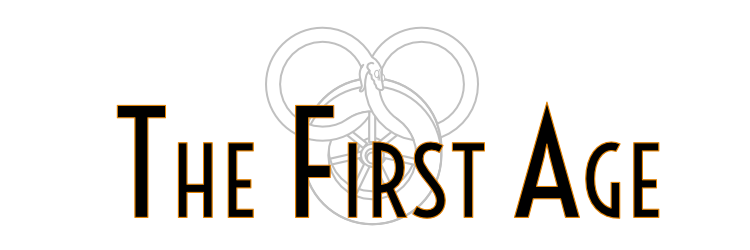Posts: 864
Threads: 59
Joined: Jul 2013
Reputation:
0
Reborn God: Loki
Channeler Current Strength: 35
Channeler Experience Level: Master
Channeler Potential Strength: 37
Options:
All Accounts Posts: 2,547
16 Attached Accounts
Entry: Trinity College collection
Some of the earliest texts in the Manuscripts and Archives Research Library are incised in cuneiform script on clay tablets from Sumeria (modern day Iraq); the tablets are upwards of two thousand years old.
There are over 70 Arabic manuscripts including some with Persian, Samaritan, Turkish, Hebrew and Hausa linguistic associations. A large proportion of the texts relate to the Islamic religion and laws; included are nearly 20 Korans.
Ancient Irish, classical and other antiquities include:
Two Ogham stones, probably dating to the 5th or 6th centuries, from Inishvickillaune, Co. Kerry and Fortwilliam, barony of Clanmaurice.
Three pre-10th-century brooches.
Two gold fibula [Ireland, ?8th-7th-century BC].
Bronze die (East Anglia, late 7th or early 8th century), used for impressing silver or gold foil.
Insular gilt bronze cross mount (8th century).
Medieval bronze bell, possibly associated with Abbey of Dough Mór, Co. Mayo.
Coptic textiles from the 3rd - 8th centuries
Pallaya, a stringed musical instrument, probably once part of collection of explorer Captain James Cook (1728-79) from his voyages in the South Seas.
Stauette of Pallas Athéné, Greek goddess
Greek stélé (stones used for commemorative purposes or as territorial markers) found in Egypt bearing a dedication of a site to the god Shebah, dated 93 BC.
"So?" said Loki impatiently. "This isn't the first time the world has come to an end, and it won't be the last either."
Posts: 864
Threads: 59
Joined: Jul 2013
Reputation:
0
Reborn God: Loki
Channeler Current Strength: 35
Channeler Experience Level: Master
Channeler Potential Strength: 37
Options:
All Accounts Posts: 2,547
16 Attached Accounts
Entry: Sybaris
One of 6 named Drakaina from myth, she is one of two surviving ones in modern times.
She was a monstrous creature from the region of Delphi, and often described in relationship to the oracle of Delphi. She issued forth from her dwelling at night to prey on handsome young men. The oracle decreed the only way to sate her was to offer a sacrifice in the form of a beautiful young man. When one such youth was chosen, a hero, in love with the youth, took his place. Upon confronting Sybaris, he threw her off the mountainside and she was never seen again.
Based off her legends, a city was eventually founded and named after her.
In fact, a Sybarite was a native of the city of Sybaris, an ancient Greek city in southern Italy. Sybarites were stereotyped as seekers of pleasure and luxury, and "sybarite" and "sybaritism" now connote such sensualism.
Like the other lamia, she possesses prophetic powers. She also hungers after the blood of handsome men and can cast a sort of blood control-spell upon them to do her bidding if they taste her blood.
"So?" said Loki impatiently. "This isn't the first time the world has come to an end, and it won't be the last either."
Posts: 864
Threads: 59
Joined: Jul 2013
Reputation:
0
Reborn God: Loki
Channeler Current Strength: 35
Channeler Experience Level: Master
Channeler Potential Strength: 37
Options:
All Accounts Posts: 2,547
16 Attached Accounts
did anyone have a chance to throw these entries on the wiki?
"So?" said Loki impatiently. "This isn't the first time the world has come to an end, and it won't be the last either."
Posts: 1,179
Threads: 68
Joined: Jul 2013
Reputation:
0
Reborn God: Lethe | Sothis
Channeler Current Strength: 5
Channeler Experience Level: Expert
Channeler Potential Strength: 19
Options:
All Accounts Posts: 3,229
31 Attached Accounts
Some of it is, some of it isn't. I suppose I can remedy this.
Jai was late twenties? I thought he was older.
Posts: 864
Threads: 59
Joined: Jul 2013
Reputation:
0
Reborn God: Loki
Channeler Current Strength: 35
Channeler Experience Level: Master
Channeler Potential Strength: 37
Options:
All Accounts Posts: 2,547
16 Attached Accounts
late 20s early 30s at most.
the thing was he was found he could channel sometime 18-20-ish years old. went to BT. was gone 10 years before returning to tar valon when the rp began.
"So?" said Loki impatiently. "This isn't the first time the world has come to an end, and it won't be the last either."
Posts: 1,179
Threads: 68
Joined: Jul 2013
Reputation:
0
Reborn God: Lethe | Sothis
Channeler Current Strength: 5
Channeler Experience Level: Expert
Channeler Potential Strength: 19
Options:
All Accounts Posts: 3,229
31 Attached Accounts
Oh, okay.
That's all done now anyway. Do you have a picture you want to use for Jay's page? Because at the moment he's a rather fetching skeleton.
Posts: 864
Threads: 59
Joined: Jul 2013
Reputation:
0
Reborn God: Loki
Channeler Current Strength: 35
Channeler Experience Level: Master
Channeler Potential Strength: 37
Options:
All Accounts Posts: 2,547
16 Attached Accounts
08-30-2018, 06:02 PM
(This post was last modified: 08-30-2018, 06:03 PM by Jaxen Marveet.)
I already posted it in this thread, dearie. Post # 6.
"So?" said Loki impatiently. "This isn't the first time the world has come to an end, and it won't be the last either."
Posts: 2,066
Threads: 156
Joined: Aug 2014
Reputation:
1
Reborn God: Ged
Channeler Current Strength: 30
Channeler Experience Level: Master
Channeler Potential Strength: 30
Options:
All Accounts Posts: 5,637
32 Attached Accounts
hehe
I think you are confusing him.





![[Image: nox_sig.gif]](http://thefirstage.org/wp-content/uploads/2023/08/nox_sig.gif)